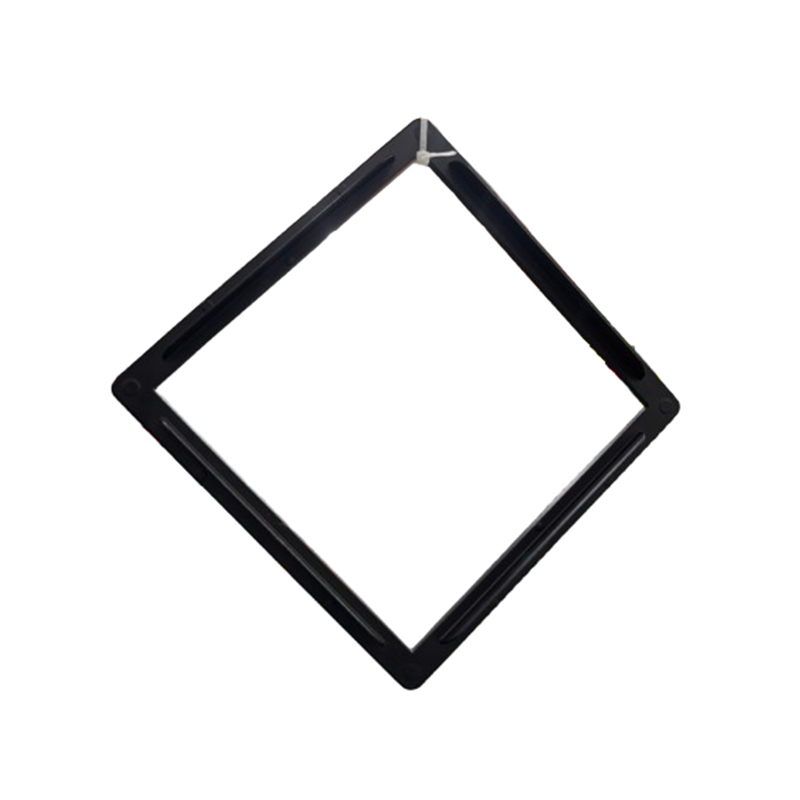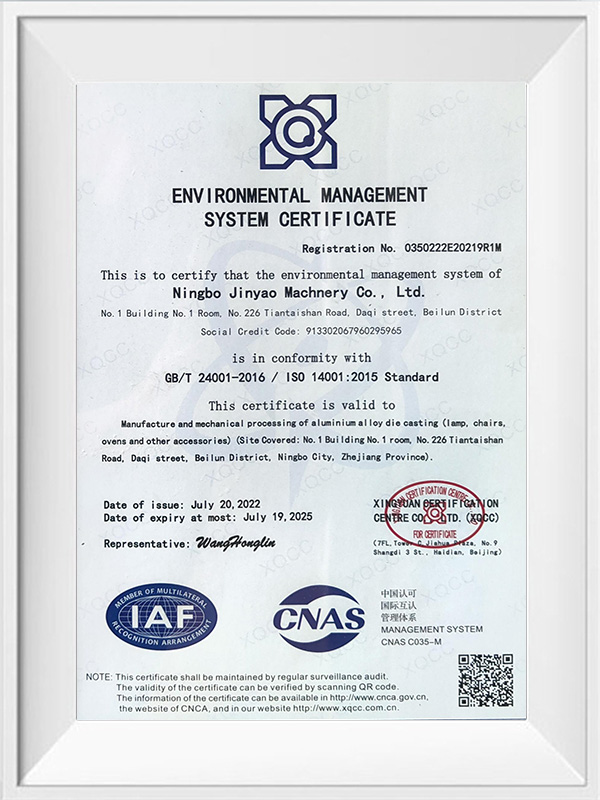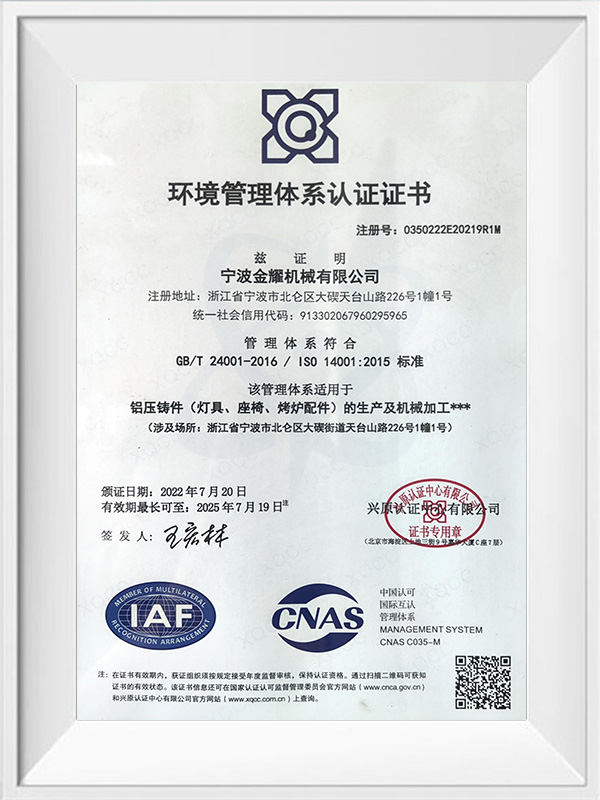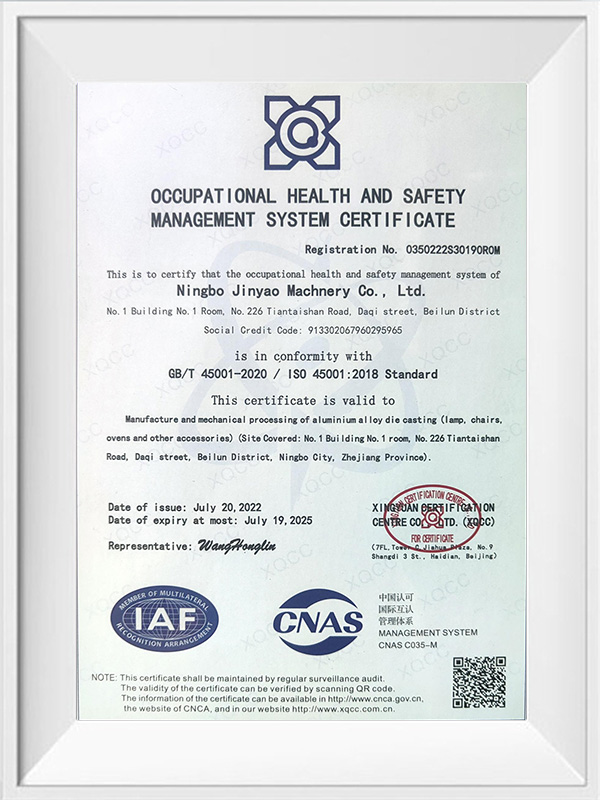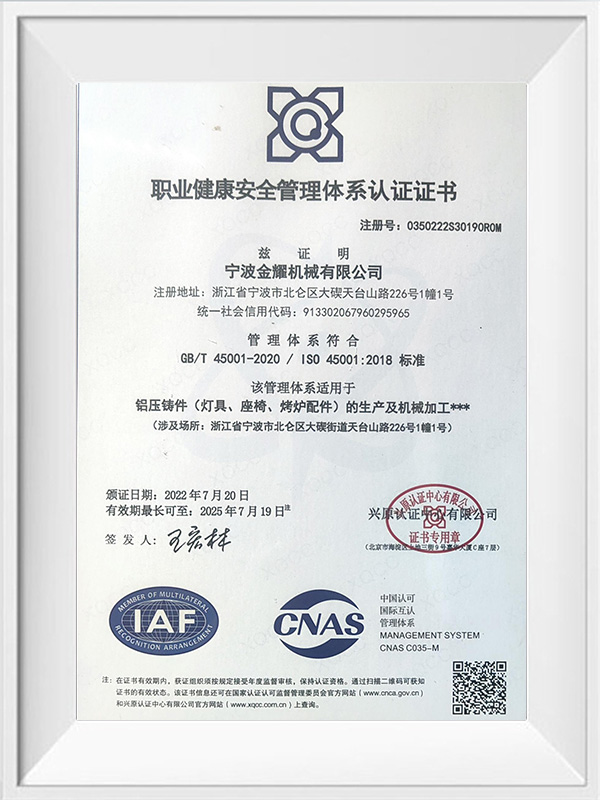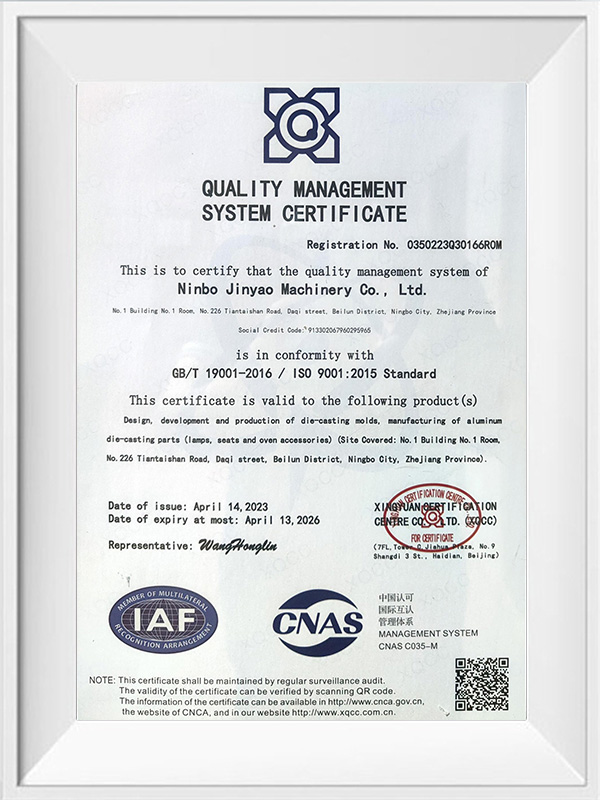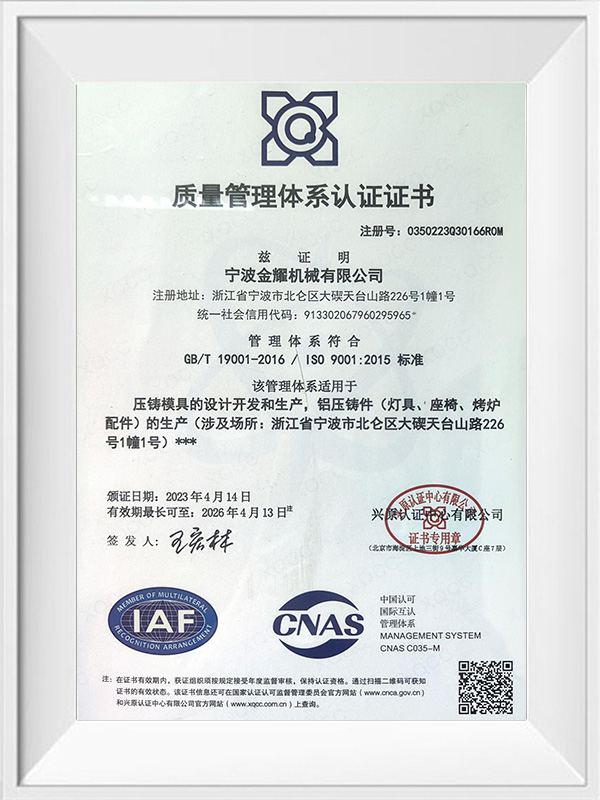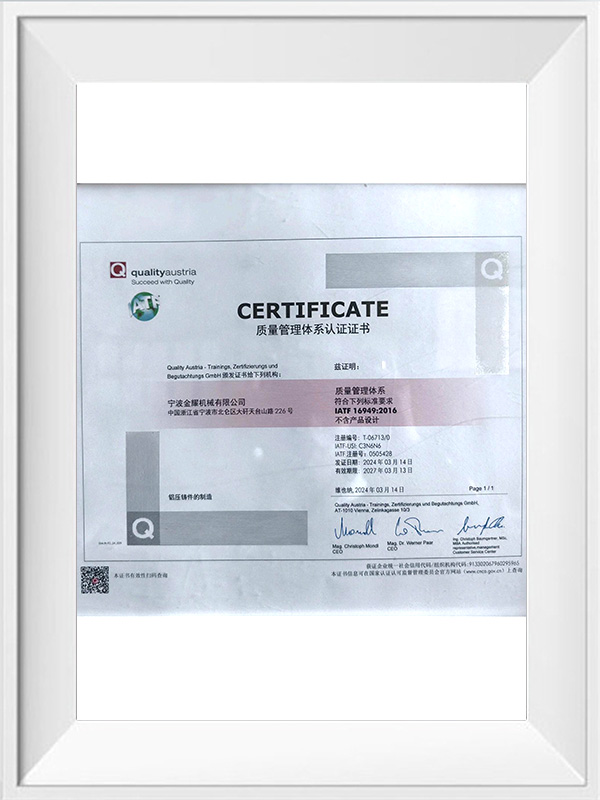Ningbo Jinyao Machinery Co., Ltd. is a China Image system die castings Suppliers and Image system die castings Foundry . And is an enterprise integrating industry and trade, dedicated to the production of precision castings of aluminum alloy materials and the design and manufacture of high-pressure die-casting molds. Adopting advanced vacuuming, pin extrusion, and high-pressure spot cooling processes, it is a large-scale professional production base for diversified casting in China. It integrates a precision casting factory and a mechanical processing plant, and can produce precision castings and various types of castings annually. More than 10,000 tons, mainly exported to Japan, Sweden and other countries. Among the customers we cooperate with are many OEM customers of trains, cars, forklifts, outboards, communication equipment, lamps, furniture parts and engineering machinery, including the world's top 500 companies. , has become an important supplier of their precision castings in China.
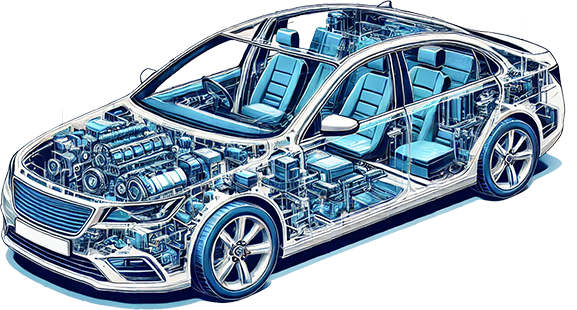
Image system die castings Suppliers
- Traditional automobile die castings
- New energy automobile die castings
- Communication housing die castings
- Electric scooter die castings
- Bicycle power motor die castings
- Motorcycle accessories die castings
- Motor housing die castings
- Engineering machinery die castings
- Lighting die castings
- Outboard motor die castings
- Furniture accessories die castings
- Grill accessories die casting
- Photovoltaic inverter die castings
Imaging system die castings play an important role in the field of modern imaging technology. They are used in a variety of applications and are commonly found in various types of imaging equipment. For example, in surveillance cameras, the housing formed by die castings protects the sensitive components inside from external environmental influences such as dust, moisture and physical impact. In digital cameras, die castings such as lens mounts ensure that the lens is accurately installed and operates stably to obtain clear and high-quality images. Functionally, imaging system die castings play a key role. They provide good structural support to ensure that the various components of the imaging equipment are accurately installed and work together. At the same time, die castings help dissipate heat to prevent the equipment from overheating and affecting performance and life.In addition, some die castings also have electromagnetic shielding functions to reduce the impact of external electromagnetic interference on image signals and ensure the stability and clarity of image transmission.
In terms of core performance, imaging system die castings usually need to have high strength and hardness to withstand various stresses in daily use. High-precision size and shape control is essential to ensure precise coordination with other components to achieve accurate optical focus and image capture. In addition, good corrosion resistance is also one of the important properties, which enables it to work stably for a long time in different environments.
The product highlights of imaging system die castings are remarkable. First, its advanced manufacturing process can achieve complex structures and fine details, meeting the needs of increasingly miniaturized and high-performance imaging equipment. Secondly, the use of high-quality materials ensures the mechanical properties and durability of die castings. Furthermore, through strict quality control and testing processes, it is ensured that each die casting meets high standards and provides stable and reliable performance.
-
What is Anodized Aluminum Die Casting and How Does It Work?View More
Anodized aluminum die casting is a highly efficient manufacturing process that combines two distinct techniques—die casting and anodizing—into one to create parts that are both highly durable and visually appealing. This process is particularly beneficial for industries that require components with ...

-
How Does Die Casting Surface Treatment Improve Product Durability?View More
Die casting is one of the most widely used metal manufacturing processes, providing high precision, complex shapes, and efficiency. However, raw die-cast components often face challenges such as corrosion, wear, surface defects, and reduced longevity. Implementing proper die casting surface treatme...

-
What Are the Common Defects Found in Die Casting Molds and How Can They Be Prevented?View More
Die casting is a popular and efficient manufacturing process for producing high-precision metal parts. It is widely used across many industries such as automotive, aerospace, and electronics. Like any manufacturing process, die casting is prone to defects, which can negatively affect part quality, p...

The core role of "Image System Die Castings" in die casting production
Image System Die Castings refers to the use of image systems (machine vision) to monitor, detect and optimize each link in the die casting production process, aiming to improve the quality of die castings, increase production efficiency and reduce the defect rate. In traditional die casting processes, quality control often relies on manual inspection, which is not very accurate and has low production efficiency. The introduction of image systems has brought a significant revolution to the die casting industry, especially in companies with large-scale die casting capabilities such as Ningbo Jinyao Machinery Co., Ltd., where the application of image systems makes the production process more intelligent and efficient.
Real-time quality monitoring and defect detection
During the die casting process, defects on the surface or inside of the casting are common quality problems. Common defects include pores, cracks, sand holes and shrinkage cavities. If these defects are not discovered in time, a large number of unqualified products may flow into the market, causing huge economic losses to the company.
Through Image System Die Castings, Ningbo Jinyao Machinery Co., Ltd. can monitor the surface and internal quality of castings in real time during the production process. The image system can efficiently identify surface defects such as pores and cracks, and classify and record defects through image processing technology. The system can also capture the details of the castings through high-resolution cameras to ensure that the surface quality of each casting meets the design standards. This makes the image system not only greatly improve the accuracy of quality inspection, but also reduce the error rate of manual inspection.
Dimension control and precision assurance
The dimensional accuracy of die castings is crucial to the function and performance of products, especially in the fields of automobiles, electronics and aviation, where dimensional deviations often lead to unqualified products. Traditional manual measurement methods often rely on manual experience and cannot monitor the dimensions of each casting in real time and accurately.
Through Image System Die Castings, the image system can capture the image of the casting in real time during the die casting process, compare it with the designed CAD model, and accurately calculate the size of each casting. The image system can automatically identify whether there is a dimensional deviation in the casting and remind the operator to make adjustments. This real-time monitoring can greatly improve the accuracy of the casting and reduce the subsequent finishing work and resource waste.
Image System Die Castings" improves production efficiency and automation level
With the expansion of production scale and the diversification of market demand, the die-casting industry has higher and higher requirements for production efficiency and automation level. Image System Die Castings not only improves the quality of die-castings, but also provides strong support for the automation of the production process. For large die-casting companies such as Ningbo Jinyao Machinery Co., Ltd., the introduction of the image system makes the production line more intelligent, greatly improving production efficiency and precision.
Process optimization and real-time adjustment
In the die-casting production process, each link such as metal liquid injection, cooling and solidification, and mold demolding may affect the quality of castings. Traditional production lines often rely on manual intervention to adjust production parameters, which is not only inefficient but also prone to human errors.
Through Image System Die Castings, the image system can monitor every link in the production process in real time, from mold injection, metal liquid flow, casting cooling to the final demolding process. The image system can capture images, analyze the smoothness, dimensional accuracy and morphological changes of the casting surface, automatically feed back to the production system, and adjust parameters such as injection pressure, mold temperature, cooling time, etc., so as to achieve intelligent optimization of the production process.
For example, in the injection molding stage, the image system can automatically identify areas with poor flow and make real-time adjustments through machine learning algorithms to ensure that the metal liquid fills the mold evenly and avoids insufficient filling. Through this automated adjustment, production efficiency has been significantly improved and the scrap rate has been significantly reduced.
Efficient production scheduling and equipment management
Image System Die Castings is not limited to quality control. It can also be combined with equipment management systems for production scheduling and equipment maintenance. By collecting production data in real time, the image system can help companies predict equipment status and reduce downtime.
Future development and innovation trends of "Image System Die Castings
With the rapid development of technologies such as artificial intelligence, the Internet of Things and big data, the application of Image System Die Castings will continue to expand, driving the die-casting industry towards a more intelligent and automated direction. In the future, the image system will not only be a tool for production and quality control, but will also become an important core for the optimization of the entire die-casting process.
Integration of artificial intelligence and deep learning
The integration of artificial intelligence and deep learning will greatly expand the functions of the image system. Through deep learning, the image system can not only identify surface defects, but also automatically optimize the production process by learning from historical production data. For example, AI can automatically adjust the injection speed, pressure and cooling time according to different casting types, further improving production efficiency and casting quality.
Ningbo Jinyao Machinery Co., Ltd. can use this technology to continuously optimize the operating parameters of the die-casting machine, reduce human intervention and errors, and improve the automation level of the production line. In the future, the image system will not only rely on preset inspection standards, but also continuously improve intelligent decision-making in the production process through self-learning.
Synergy of big data and cloud computing
With the accumulation of production data, Image System Die Castings will be combined with big data technology to use cloud computing platforms to analyze and predict a large amount of production data in real time. By uploading data from each production link to the cloud platform, enterprises will be able to fully understand every detail of the production process through big data analysis, predict equipment failures and quality problems, and thus perform preventive maintenance.
For example, the combination of the image system and the big data platform can analyze the production results of different batches and different environmental conditions, dig out the optimal production mode, and continuously optimize the production process. Ningbo Jinyao Machinery Co., Ltd. can use this data to optimize production scheduling, refine management, and improve the flexibility and responsiveness of the entire production system.
Implementation of fully automated production lines
In the future, the image system will be combined with robotics and the Internet of Things (IoT) to promote the full automation of die-casting production lines. Every link in the entire production process, including raw material handling, mold assembly, casting inspection, packaging, etc., will be completed by the automation system, and the image system will be the core link throughout.
For example, the image system can monitor the use of molds in real time, and automatically replace and adjust the molds through intelligent robots. This fully automated production line will greatly improve production efficiency, reduce human errors, and improve production flexibility.

 English
English Español
Español Deutsch
Deutsch русский
русский Traditional automobile die castings
Traditional automobile die castings New energy automobile die castings
New energy automobile die castings Communication housing die castings
Communication housing die castings Electric scooter die castings
Electric scooter die castings Bicycle power motor die castings
Bicycle power motor die castings Motorcycle accessories die castings
Motorcycle accessories die castings Motor housing die castings
Motor housing die castings Engineering machinery die castings
Engineering machinery die castings Lighting die castings
Lighting die castings Outboard motor die castings
Outboard motor die castings Furniture accessories die castings
Furniture accessories die castings Grill accessories die casting
Grill accessories die casting Photovoltaic inverter die castings
Photovoltaic inverter die castings